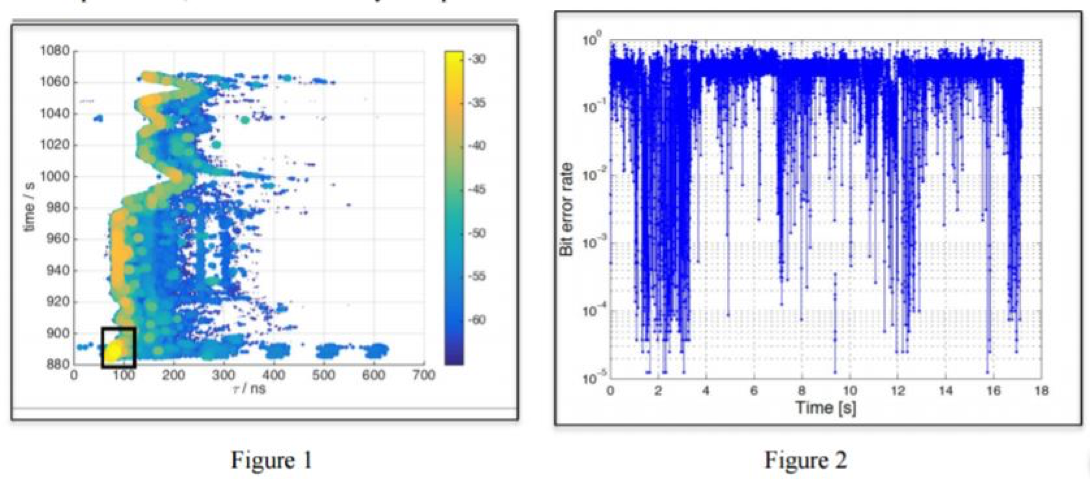News | METRANS Releases New Research on the Performance of Existing Communication Standard in Mixed Passenger-Freight Convoys
Stop the VideoNews

METRANS UTC
METRANS Releases New Research on the Performance of Existing Communication Standard in Mixed Passenger-Freight Convoys
Saturday, December 3, 2016
by By Shichun Hu
Intelligent Transportation Systems (ITS) have become a hot topic in recent years. When it comes to vehicles, an important feature of such systems is that they be able to “talk” to each other. To make that happen, IEEE 802.11p was introduced. It is an amendment to the IEEE 802.11 standard (the basis of products marketed as Wi-Fi) so as to add wireless access in vehicular environments.
Since the introduction of IEEE 802.11p, there has been neither a large-scale field test with actual IEEE 802.11p compliant devices, nor a detailed model for the propagation channel between the participating vehicles under various circumstances. To fill this gap, METRANS researcher Andreas Molisch, along with postdoctoral researcher Olivier Renaudin, and PhD students Rui Wang and He Zhang, investigated the performance of this amendment in systems with mixed truck/car conveys. The project is named “Vehicle-to-Vehicle Communications in Mixed Passenger-Freight Convoys”.
They first developed a fully functional real-time multiple-input and multiple-output (MIMO) measurement platform for vehicle-to-vehicle propagation channels and then performed extensive measurement campaigns for various mixed truck/car scenarios. Finally, after the development and parametrization of a channel model based on the measured data, they assessed the performance of IEEE 802.11p compliant communication systems.


Sources: https://www.metrans.org/research-projects/metrans-utc
Professor Molisch and his team created Figure 1 above per their project, to illustrate the “time-varying power delay profile (PDP) of extracted path estimates from the experiment of the car-to-car obstructed by a truck in-between. The delays of strong paths match well with the distance between the TX and RX.” Their Figure 2 shows that “The BER in general increases when the line-of-sight path (LOS) is obstructed, and reduces when it is only partially obstructed.”
They believe their investigation in the performance of this amendment can provide many insights on the probability of successful communication between vehicles as well as the latencies and reliabilities of the wireless links. This, in turn, would help the design of control systems and the development of policies and technologies for convoy formation.
For full report, click here.
Andreas Molisch
Andreas F. Molisch received the Engineering Degree (Dipl. Ing.), Doctor of Technology (Dr. techn.), and habilitation degrees from the Technical University Vienna (Austria) in 1990, 1994, and 1999, respectively and became an associate professor there in 1999. From 2000-2002, he was with the Wireless Systems Research Department at AT&T (Bell) Laboratories Research in Middletown, NJ, USA. From 2002-2008, he was with Mitsubishi Electric Research Labs, Cambridge, MA, USA, most recently as Distinguished Member of Technical Staff and Chief Wireless Standards Architect. Concurrently he was also Professor and Chair-holder for radio systems at Lund University, Sweden. Since 2009, he is Professor of Electrical Engineering at the University of Southern California, Los Angeles, CA, USA, where he heads the Wireless Devices and Systems (WiDeS) group. Since 2011, he is also co-director of the Communications Sciences Institute (CSI). His current research interests are measurement and modeling of mobile radio channels, UWB, cooperative communications, MIMO systems, novel cellular architectures, and wireless healthcare. Professor Molisch has authored, co-authored or edited 4 books (among them the textbook "Wireless Communications, Wiley-IEEE Press, 2nd ed.), 16 book chapters, some 150 journal papers, and numerous conference contributions, as well as more than 70 patents and 60 standards contributions.
Shichun Hu
Author Shichun Hu is a student assistant at METRANS Transportation Center specializing in and coordinating the METRANS Mentor Program. She is a 2nd year graduate student majoring in Industrial and System Engineering in the Viterbi School of Engineering, USC. Her interests are using data and operation research methods to improve urban logistics and the supply chain. She is pursuing analytical internships in these fields.
News Archive
- December (1)
- November (6)
- October (4)
- September (2)
- August (3)
- July (4)
- June (3)
- May (7)
- April (8)
- March (11)
- February (8)
- January (7)
- December (7)
- November (8)
- October (11)
- September (11)
- August (4)
- July (10)
- June (9)
- May (2)
- April (12)
- March (8)
- February (7)
- January (11)
- December (11)
- November (5)
- October (16)
- September (7)
- August (5)
- July (13)
- June (5)
- May (5)
- April (7)
- March (5)
- February (3)
- January (4)
- December (4)
- November (5)
- October (5)
- September (4)
- August (4)
- July (6)
- June (8)
- May (4)
- April (6)
- March (6)
- February (7)
- January (7)
- December (8)
- November (8)
- October (8)
- September (15)
- August (5)
- July (6)
- June (7)
- May (5)
- April (8)
- March (7)
- February (10)
- January (12)















